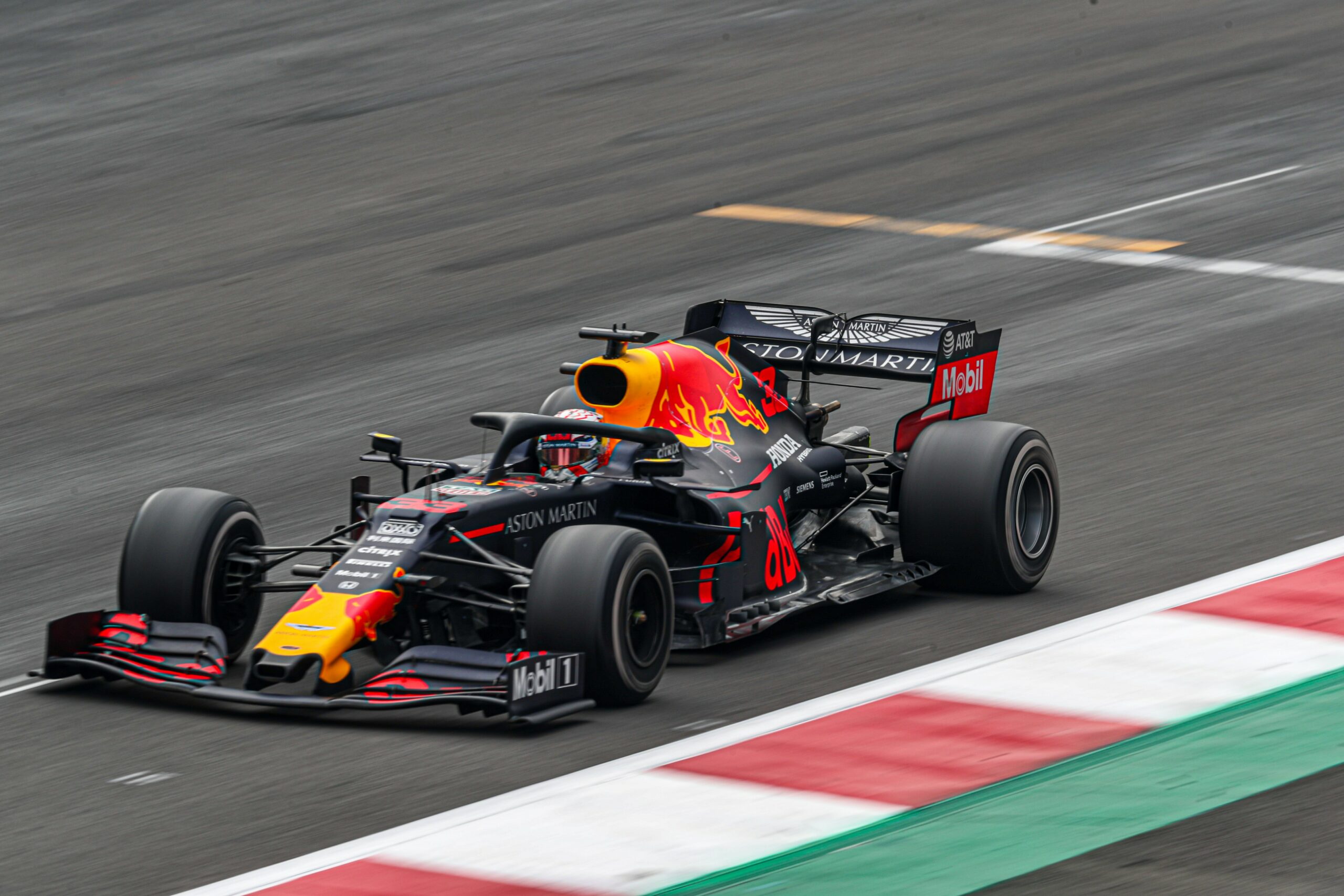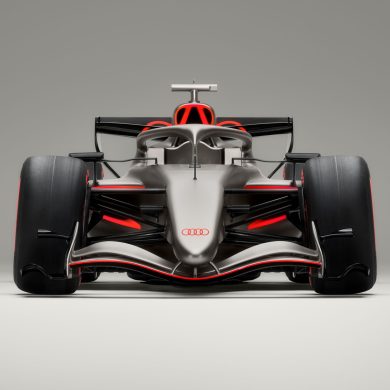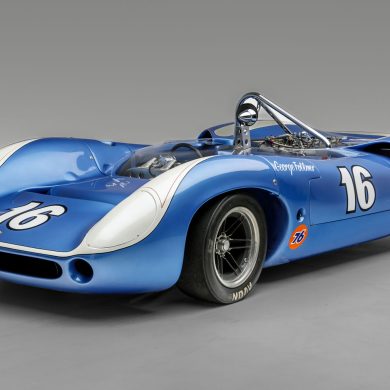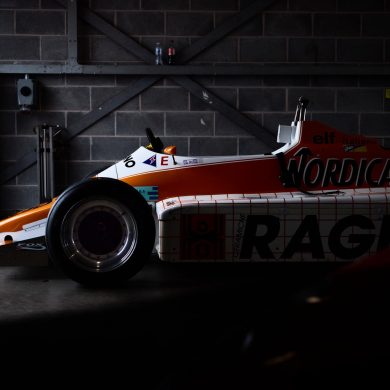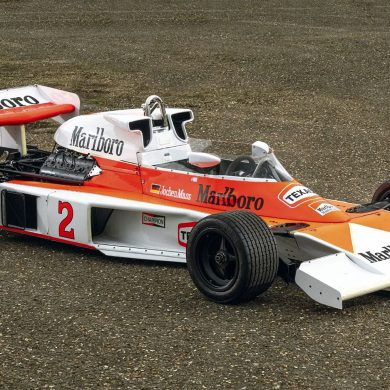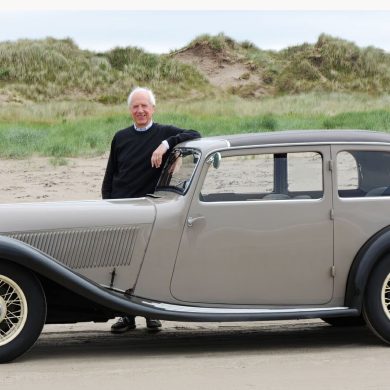Glossary of Terms – Formula 1
Aerodynamics – an intrinsic part of Formula One, a study of how air flows over and around an object
Apex – the point at which the racing line meets the inside of a corner, hitting the apex leads to the fastest theoretical way round a corner
Appeal – the action a team takes when they feel that either they, or their drivers, have been unfairly penalized by officials
Aquaplaning – in heavy rain when the tires lose grip and the driver has no control
Ballast – small tungsten plates, which are positioned around the vehicle to achieve perfect weight distribution and to bring the car to its minimum weight of 605kg
Bargeboard – a piece of body work between the front wheels and the sidepod to help smooth the flow of air around the sides of the car
Blistering – what happens to a tyre when it overheats, parts of the rubber soften and breakaway impairing the handling of the car
Bottoming – when the bottom of the car hits the track, often seen as a shower of sparks
Brake Balance – the distribution of braking power between the front and rear wheels, this can be altered by the driver via a cockpit switch at any point, at some circuits this is done numerous times a lap
Brake Locking – under heavy braking when a wheel stops rotating, can often cause a flat spot
Camber – the angle of the wheel and tyre in relation to the track surface
Chassis – the main frame of a car to which the engine and suspension are attached
Chicane – a tight series of corners that alternate in direction, often used to slow cars down
Clear Air – when a driver has no one in front of him on the track and the air is not disturbed by a competitor’s aerodynamics
Cockpit – the area of a car where the driver sits, effectively his office
Compound – the recipe used to make a tyre, typically a Formula One tyre compound is made up of more than ten ingredients in different amounts
Differential – sometimes referred to as the ‘Diff’, it is the device connected to the rear wheels which allows each wheel to rotate at different speeds during cornering too ensure balanced handling
Diffuser – a device which generates downforce by funneling the air out of the back of the car, the faster the air exits the more downforce is created
Dirty Air – the disturbed air left behind an F1 car, which negatively affects the aerodynamics of the following car
Downforce – the aerodynamic force which pushes a Formula One car down into the track as it moves forward and improves traction and handling through corners
Drag – the effect of a cars aerodynamics at high speed, the more drag a car generates the more resistance it has to the air at high speeds
Drive Through Penalty – a penalty which can be given to a driver by the race stewards during the course of a race. A driver must enter the pits and pass through at the limited speed without stopping
DRS – Also known as adjustable rear wings, DRS (Drag Reduction System) rear wings allow the driver to adjust the wing between two pre-determined settings from the cockpit. The system’s availability is electronically governed – it can be used at any time in practice and qualifying (unless a driver is on wet-weather tyres), but during the race can only be activated when a driver is less than one second behind another car at pre-determined points on the track. The system is then deactivated once the driver brakes.
ECU – electronic control unit, or the brain of the engine which controls all of its functions Engine mapping – the setting which dictates how an engine behaves. Drivers can adjust the settings during a race, often to alter strategy
Flags – Marshals at various points around the circuit are issued with a number of standard flags, all used to communicate vital messages to the drivers as they race around the track. A special display in each driver’s cockpit – known as a GPS marshalling system – also lights up with the relevant flag colour, as the driver passes the affected section of track.
- Chequered Flag – Indicates to drivers that the session has ended. During practice and qualifying sessions it is waved at the allotted time, during the race it is shown first to the winner and then to every car that crosses the line behind him.
- Yellow Flag – Indicates danger, such as a stranded car, ahead. A single waved yellow flag warns drivers to slow down, while two waved yellow flags at the same post means that drivers must slow down and be prepared to stop if necessary. Overtaking is prohibited.
- Green Flag – All clear. The driver has passed the potential danger point and prohibitions imposed by yellow flags have been lifted.
- Red Flag – The session has been stopped, usually due to an accident or poor track conditions.
- Blue Flag – Warns a driver that he is about to be lapped and to let the faster car overtake. Pass three blue flags without complying and the driver risks being penalised. Blue lights are also displayed at the end of the pit lane when the pit exit is open and a car on track is approaching.
- Yellow and Red striped Flag – Warns drivers of a slippery track surface, usually due to oil or water. Black with orange circle flag Accompanied by a car number, it warns a driver that he has a mechanical problem and must return to his pit.
- Half Black, Half White Flag – Accompanied by a car number, it warns of unsporting behaviour. May be followed by a black flag if the driver does not heed the warning.
- Black Flag – Accompanied by a car number, it directs a driver to return to his pit and is most often used to signal to the driver that he has been excluded from the race.
- White Flag – Warns of a slow moving vehicle on track.
Flat Spot – caused when a driver locks his brakes, causing the tyre to be dragged along the surface without turning. This creates a flat spot on an otherwise round surface, and although normally only the size of a small coin, it can cause huge vibrations in the car
Formation Lap – sometimes referred to as the warm up, green flag or parade lap, when cars complete one full lap from their grid spot immediately before the start of the race
G-Force – a physical force equal to one unit of gravity which is multiplied during changes of speed or direction. Drivers experience serious G-Force when they corner, brake or accelerate
Graining – when tires wear during use, causing small pieces of rubber to break off, these stick to other areas of the tyre making the surface uneven and causing a lack of grip
Gravel Trap – an area of gravel on the outside of a corner designed to reduce the speed of a car which leaves the circuit. In modern tracks more often replaced by run-off areas which allow the car to rejoin the circuit
Gurney Flap – a small flap on the edge of the wing, mounted at a right angle and designed to increase downforce, named after Daniel Sexton Gurney.
Green Circuit – a track surface which is still very clean with little rubber on its surface, it will produce slower lap times because there is less grip. Temporary or road circuits are often referred to as green
HANS Device – the Head and Neck Support System was invented in the mid 1980s by Dr Bob Hubbard, a bio-mechanical engineering professor at Michigan State University. Basically a black collar that fits over drivers shoulders and attaches to the helmet with straps that restrict the movement of the head in an accident, reducing the risk of injury.
Installation Lap – the first laps done at the circuit, to test functions such as throttle, brake and steering settings before returning to the pits
In-Lap – a lap on which the driver enters the pits
KERS – the Kinetic Energy Recovery Systems, introduced at the start of the 2009 season but only used by a limited number of teams. The system recovers waste energy from the car during braking and deceleration and stores it to use as a power boost during periods of the lap.
Lapped – when the lead car passes a back marker, either physically or in number of laps completed, they become lapped
Loose – when a car, normally at the rear, lacks consistent grip and feels or looks unstable
Left Foot Braking – a driving style made popular in F1 in the 1990’s following the arrival of hand clutches, this meant the driver could dedicate the right foot to the accelerator while his left foot concentrates on braking
Lollipop – the stick held in front of a driver during a pit stop, and used to signal to the driver when he should engage first gear and when he is clear to exit his pit box
Marshal – a course official, normally a volunteer, who has numerous jobs which ensure the safe running a race, including giving flag signals and reporting the facts of an accident
Marbles – small pieces of rubber that wear off the tires during a session, these build up off the racing line making the track surface slippery
Monocoque – the heart of an F1 car, the carbon fibre safety shell that surrounds the driver and is designed to stay intact in the result of an accident
Out-lap – the lap on which the driver exits the pits
Option Tires – the softer of the two Bridgestone tires available to a team during a race weekend. These tires are denoted by a green stripe around the sidewall
Oversteer – when the car steers more than the driver had intended, which can result in the rear of the car trying to overtake the front as the rear wheels loose grip
Paddles – the levers on either side of the steering wheel which the driver uses to change up or down through the gears
Paddock – the private area behind the pits in which the teams keep their transporters and motorhomes. There is no public admission, except through a much sort after paddock pass
Prime Tires – the harder of the two Bridgestone tires available to the team during a race weekend
Parc Ferme – a restricted area into which cars are driven after qualifying and the race, no work can be done on a car and no team members are allowed access to the cars unless under strict supervision of race stewards
Pit Board – a board displayed to a driver from the pit wall to pass on information. This is normally race position and the gap to the driver in front. It is also used to signal the driver to come into the pits
Pit Wall – where the team owner, manager and engineers spend the race
Pits – the area of the circuit separated from the pit straight by the pit wall in front of the garages. Where the cars brought for pit stops
Plank – a traditionally wooden strip (now a composite material) fixed to the bottom of the car and used to check that the car is not running too low to the ground, which can be seen from excessive wear
Pole Position – the first place at the front of the grid, awarded to the driver who records the fastest lap time in qualifying. The term originates from horse racing when the number one horse would start from the inside, next to the pole.
Power Unit – In simpler times this was referred to as the engine or motor but now includes the engine, any batteries, capacitors or flywheels, turbocharger, intercooler and the MGU-H & MGU-K generators
Practice – periods of track time on a Friday and Saturday of a race weekend which are set aside for on track preparation of the car and driver ahead of qualifying
Protest – an action lodged by one team when it suspects another team or competitor of breaking the rules
Qualifying – a session split into three knock-out sections in which drivers try to achieve the best possible time which will determine their grid spot
Reconnaissance Lap – the lap the drivers complete on leaving the pits and heading to the grid. Drivers may carry out numerous reconnaissance laps but have to pass through the crowded pit lane
Retirement – when a car withdraws from the race due to an accident or mechanical failure
Run-off Area – the space on a circuit between the racing surface and the tyre wall, designed to allow cars to safely return to the track
Ride Height – the height of the car above the ground. Often referred to when discussing tyre temperatures or fuel levels, which can have an effect
Rubbered In – when tyre rubber is left on the track improving grip and therefore speed, a green circuit can become rubbered in
Safety Car – the high performance course vehicle, which is deployed during a race to slow the pack down, normally to allow marshals and officials to clean debris from the circuit or tend to a driver who has crashed
Scrutineering – technical checks made on the cars and drivers equipment to check they are safe, and do not breach regulations
Sectors – the three sections the circuit is split into for timing purposes
Shake Down – a brief test where the team is trying out a new component for the first time
Sidepod – the part of the car that flanks the monocoque and houses the radiators
Steward – one of three high ranking officials at a race appointed to make decisions
Stop-go Penalty – a punishment given to a driver which requires them to stop at his pit box for ten seconds – during this time the team are not allowed to do any work on the car
Set-up – testing different settings for wings, suspension and ride height to find the optimum setting for the event
Slipstream – the area immediately behind the car when it is traveling at speed, the air pressure and drag is reduced allowing the following car an advantage
Superlicence – the race driving licence level that all drivers are required to hold in order to race in F1. The cost of the licence depends on the drivers’ previous performance, in 2008 the fees were raised to a basic cost of 10,000 euro, with an addition 2,000 euro for every point scored in the previous season. The FIA have pledged to cut the cost for the 2010 season
Tear-off Strips – see through plastic strips which drivers attach to their visor before a race, the strips can be removed, one by one, as they become dirty
Telemetry – the system that sends data about the car and its components to the pits, so mechanics can monitor the cars performance
Tethers – a safety device which is designed to keep the wheels attached to the car in the event of an accident. Introduced after 1998 a second tether was added after the single tether was deemed insufficient.
Traction Control – similar to a road car, a system which detects if a rear wheel is spinning and transfers more power to the one that has grip. This system was banned in F1 cars from the 2008 season onwards
Tire Warmer – An electric blanket that is wrapped around the tyre, before they are fitted to the car, in order to keep them as close to optimum temperature as possible
Warm-up – what drivers use the green flag lap to bring the components of their car up to operating temperature, often weaving to warm tires and braking heavily to warm the brakes


